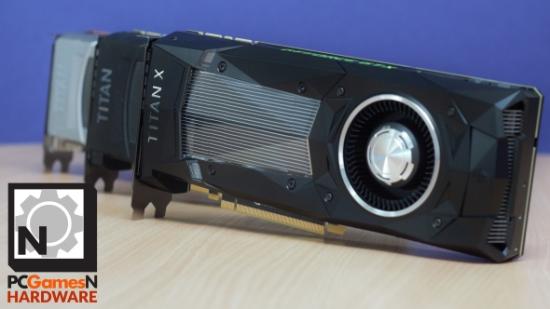Nvidia’s GTX Titan GPUs are easily the most desirable graphics card in the world right now. And it’s been that way since the first Titan bolted out of the GeForce stable back in the sepia-tinged days of 2013. But how does the Pascal-based GTX Titan X stack up against its forebears? Let’s find out.
The Titan X might be the fastest, but is it the bestest? Check out our guide to top graphics cards for every budget.
But first a little history lesson… The original GTX Titan arrived on my desk in early February, 2013 and what a wondrous day that was. But the card was an anomaly, the first real ultra-enthusiast GPU ever released for the consumer market, bringing pro-level graphics silicon down to a level that was far more affordable than ever before.
Sure, it was a $999 graphics card, and with its GeForce branding you’d be forgiven for thinking it was a card designed purely for Bioshock Infinite and Battlefield 4, but it featured a Kepler GPU ripped straight out of the same Tesla K20 cards that powered the Cray Titan supercomputer. With its unfettered double precision performance and immense rendering power professional institutions, graphics professionals, enthusiast hobbyists and moneybags gamers all queued up to buy every single GTX Titan Nvidia could produce.
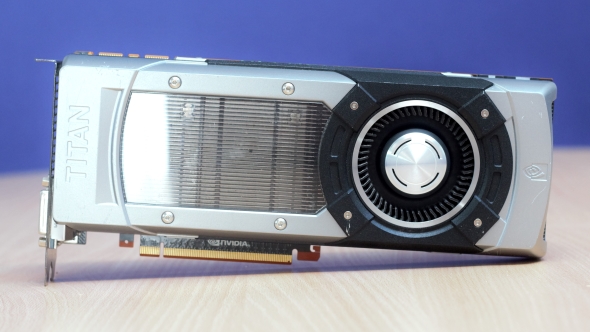
It was though also an anomaly in that it wasn’t actually the fastest graphics card around when it released. At the time both Nvidia and AMD were still creating dual-GPU cards to top off their graphics card ranges and both the GTX 690 and HD 7990 were capable of higher levels of raw gaming performance.
Thanks to the vagaries of multi-GPU performance, not to mention flaky developer-level support, the GTX 690 and HD 7990 couldn’t be trusted to the same extent as the single GPU Titan which performed only slightly slower.
But times move on and later that year the GTX 780 Ti tipped up using the full version of the Titan’s GK110 GPU, followed by the Titan Black – a refresh based on the same GPU but with the Titan’s double precision chops and memory capacity. Then Nvidia lost the plot and released the impressively irrelevant dual-GK110 Titan Z. As an aside, a buddy at a rival graphics card manufacturer actually tried to expense the cost of one for us to test, so confident was he in its innate ridiculousness. Sadly he couldn’t get sign off to spend $3,000 on a sick marketing burn.
But we still don’t talk about the Titan Z; for tech journos it’s like the Scottish play…
With the graphics world failing to make the jump from 28nm GPUs to 20nm Nvidia’s Maxwell architecture stalled and the Kepler GPUs stuck around far longer than expected. It wasn’t until March 2015 that the Titan awoke once more, with the Maxwell-powered GTX Titan X.
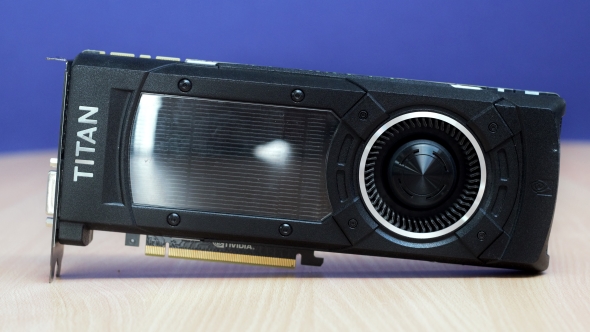
Unlike the original though neither the Maxwell nor this year’s Pascal-based Titan X cards have the same pro-level performance proffered by the original fully double precision capable Titan. Professional graphics people once more have to stick with pricey professional class cards.
But that doesn’t matter to us gamers and the gaming performance of successive generations of GTX Titan have pushed the boundaries of what a single GPU can do.
Clash of the GTX Titans – benchmarks

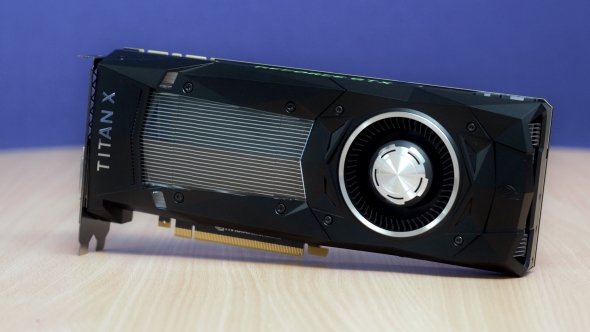
Clash of the GTX Titans – performance
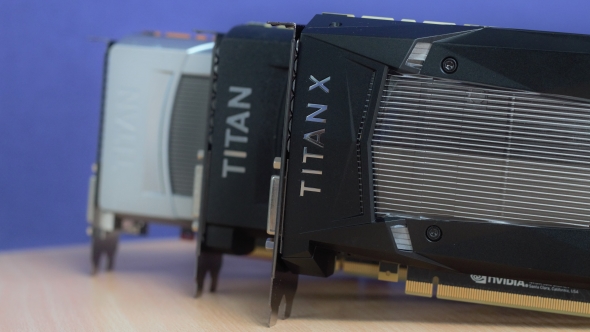
The generation on generation performance differences between the three generations of GTX Titan are stark. As a three year old graphics card it’s not really much of a surprise to see the original Titan looking quite so tired in-game. But it does serve as a warning to anyone spending more than they can really afford on an insanely pricey graphics card – a few years later and any ~$200 GPU will be able to knock your expensive silicon into touch.
Yup, the RX 480 is able to reach Titan levels of gaming performance. And it’s got more memory too.
That’s to be expected though – three years is a long time in the world of PC graphics. Back in 2013 I hadn’t even laid eyeballs on a 4K monitor, much less jammed a Titan into one. What’s more interesting though is just how far ahead of the Maxwell-powered GTX Titan X the Pascal version is. At 4K levels the latest Titan X is getting mighty close to twice the gaming performance of its forebear, and it’s pretty close to that at 1440p too.
This performance gain from one architecture to another, and one process shrink later, highlights just how big of a change the Pascal technology represents. The fact the power levels remain so tightly grouped is testament to the efficiency work Nvidia have put into the successive generations.
While the TDP itself has remained stable at 250W, the overall platform power draw from the three cards has only changed very slightly, and yet the thermal performance of the different GPUs has changed even less. The Pascal Titan X is the hottest and most power hungry of the lot, but only by a small margin compared to the extra performance the dominant GPU can deliver.
The performance improvement of the current Titan X over its progenitors is impressive, and in your less lucid moments that might even lead you to consider its ridiculous price tag with something other than frustrated contempt. But it’s the last days of October and that means CES and the expected announcement of a GTX 1080 Ti are but a few months away now…
